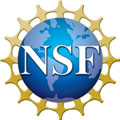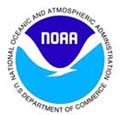St. Petersburg, Florida, May 6-8, 2008
Despite their relatively small surface area, ocean margins may have a significant impact on global biogeochemical cycles, and potentially, in the global air-sea fluxes of CO2. Ocean margins are characterized by intense geochemical and biological processing of carbon and other elements and are sites where large amounts of matter and energy are exchanged with the open ocean.
Workshop Archive contents:
The area-specific rates of productivity, biogeochemical cycling, and organic/inorganic matter sequestration are high in ocean margins, with as much as half the global new production occurring over continental shelves and slopes. However, the current lack of knowledge and understanding of biogeochemical processes occurring at ocean margins has left the processes largely ignored in most previous global assessments of the oceanic carbon cycle. A major source of carbon uncertainty for North America and global models is the Gulf of Mexico (GMx), a large semi-enclosed subtropical basin bordered by the United States, Mexico, and Cuba. Like many of the marginal ocean basins worldwide, the GMx remains largely unsampled and poorly characterized in terms of its air-sea exchange of carbon dioxide and other carbon fluxes.
Approximately 90 participants from 23 states and Mexico participated in a 2½ day workshop to develop research strategies for addressing information gaps in understanding carbon fluxes associated with the Gulf of Mexico. The Ocean Carbon and Biogeochemistry program (OCB) sponsored the workshop with support from the U.S. National Science Foundation (NSF), National Oceanic and Atmospheric Administration (NOAA), National Aeronautics and Space Administration (NASA), U.S. Geological Survey (USGS), and University of South Florida College of Marine Science.
The workshop goal was to bring together researchers from across multiple disciplines, including terrestrial, aquatic, and marine ecosystems, to discuss the state of knowledge of carbon fluxes, data gaps, and overarching questions in the Gulf of Mexico system. The workshop stimulated discussions on how best to design integrated studies of marine and terrestrial biogeochemical cycles and associated ecosystems that would improve understanding of the evolving role of the gulf in the carbon cycle in the face of environmental change.
On the first day, plenary speakers summarized the state of knowledge of onshore and Gulf carbon dynamics, and processes that are of primary importance in controlling variability in fluxes and fates of carbon. Prior to the meeting, a survey queried the participants on ideas and questions that would be discussed further in breakout groups. During breakout sessions, participants were asked to build on the plenary information and to formulate questions that would drive future research projects. The second day was focused on carbon dynamics, including scales of variability, the infrastructure required to study the carbon fluxes, and the modeling framework for integration across the system. Discussions within the breakout groups for each day focused on questions and strategies that would help lead the community to formulate research programs that would address the significant questions.
During the workshop, participants provided recommendations to encourage the continuation of monitoring data and mining historical data to refine existing and new models that link watersheds and oceans. The use of such data in models will help identify unknowns and better define important process-level questions. The ocean community also recommended better integration with the North American Carbon Program (NACP) in order to identify current measurement gaps.
The Gulf of Mexico needs to be studied as an inclusive system consisting of watersheds, Gulf margins, open water, overlying atmosphere, and underlying sediments. Participants recognized the key to understanding the GMx system requires an improved international collaboration with scientists from U.S. states and countries bounding the GMx.
A concerted effort to integrate new technologies into sampling programs will improve climate projections for the GMx and will greatly advance the ability to predict future changes and associated impacts on GMx ecosystems. To achieve this goal, participants recommended an integrated network of carbon monitoring stations on land and ocean that would build on existing infrastructure and augmentation of these capabilities where needed.
Organizers presented major recommendations and a draft report to the community during the annual OCB summer meeting in Woods Hole, MA (July 2008). The full workshop report is available here (~7 MB).





Steering Committee
Wei-Jun Cai (The University of Georgia)
Paula Coble (University of South Florida)
Ben de Jong (El Colegio de la Frontera Sur)
Scott Denning (Colorado State University)
Eileen Hofmann (Old Dominion University)
Brent McKee (The University of North Carolina)
Lisa Robbins (USGS)
Related Papers and Reports
North American Continental Margins: A Synthesis and Planning Workshop Draft Report
Bibliography with Related Papers
Crawford, T.L., R.T. McMillen, T.P. Meyers and B.B. Hicks (1993). Spatial and temporal variability of heat, water vapor, carbon dioxide, and momentum air-sea exchange in a coastal environment. Journal of Geophysical Research, 98: 12869-880.
Donner, S.D., and C.J. Kucharik (2008). Corn-based ethanol production compromises goal of reducing nitrogen export by the Mississippi River. PNAS, 105 (11): 4513-4518.
Goni, M. A., K. C. Ruttenberg, et al. (1997). Sources and contribution of terrigenous organic carbon to surface sediments in the Gulf of Mexico. Nature 389(6648): 275-278.
D'Sa, E.J., R.L. Miller, and B.A. McKee (2007). Suspended particulate matter dynamics in coastal waters from ocean color: Application to the northern Gulf of Mexico. Geophysical Research Letters, 34: doi: 10.1029/2007GL031192.
Goni, M. A., K. C. Ruttenberg, et al. (1998). A reassessment of the sources and importance of land-derived organic matter in surface sediments from the Gulf of Mexico. Geochimica Et Cosmochimica Acta 62(18): 3055-3075.
Gordon, E. S. and M. A. Goni (2003). Sources and distribution of terrigenous organic matter delivered by the Atchafalaya River to sediments in the northern Gulf of Mexico. Geochimica et Cosmochimica Acta 67(13): 2359-2375.
Gordon, E. S. and M. A. Goni (2004). Controls on the distribution and accumulation of terrigenous organic matter in sediments from the Mississippi and Atchafalaya river margin. Marine Chemistry 92(1-4): 331-352.
Green, R. E., T. S. Bianchi, et al. (2006). An organic carbon budget for the Mississippi River turbidity plume and plume contributions to air-sea CO2 fluxes and bottom water hypoxia. Estuaries and Coasts 29(4): 579-597.
Griffith, Peter C., and Lawrence R. Pomeroy (1995). Seasonal ans spatial variations in pelagic community respiration on the southeastern U.S. continental shelf. Continental Shelf Research, 15: 815-825.
Hofmann, Eileen et al. The USECoS Team (2008). Eastern U.S. Continental Shelf Carbon Budget. Oceanography, 21(1): 32-50.
Mitra, S., T.S. Bianchi, B.A. McKee and M. Sutula (2002). Black Carbon from the Mississippi River: Quantities, Sources, and Potential Implications for the Global Carbon Cycle. Environ. Sci. Technol., 36: 2296-2302.
Raymond, P. A., N. H. Oh, et al. (2008). Anthropogenically enhanced fluxes of water and carbon from the Mississippi River. Nature 451(7177): 449-452.
Waterson, E.J., and E.A. Canuel (2008). Sources of sedimentary organic matter in the Mississippi River and adjacent Gulf of Mexico as revealed by lipid biomarker and δ13CTOC analyses. Organic Geochemistry, 39: 422-439.



